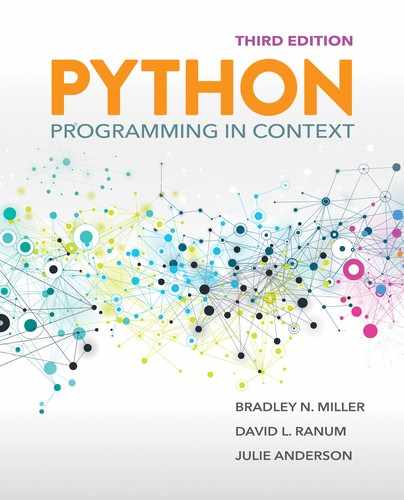0%
111Chapters
0-1Hours read
0kTotal Words
Table of Contents
- Cover
- Title Page
- Copyright Page
- Dedication
- Contents
- Preface
- 1 Introduction to Pythona
- 2 πthon: Estimating Pi
- 3 Codes and Other Secrets
- 4 Introducing the Python Collections
- 5 Bigger Data: File I/O
- 6 Image Processing
- 7 Data Mining: Cluster Analysis
- 8 Cryptanalysis
- 9 Fractals: The Geometry of Nature
- 10 Planet Objects
- 11 Simulation
- 12 Father Was a Rectangle
- 13 Video Games
- APPENDIX A Installing the Required Software
- APPENDIX B Python Quick Reference
- B.1 Python Reserved Words
- B.2 Numeric Data Types
- B.3 Built-in Functions
- B.4 Sequence Operators
- B.5 Dictionaries
- B.6 Files
- B.7 Formatting Output
- B.8 Iteration
- B.9 Boolean Expressions
- B.10 Selection
- B.11 Python Modules
- B.12 Regular Expression Patterns
- B.13 Defining Functions
- B.14 Defining Classes
- B.15 Deleting Objects
- B.16 Common Error Messages
- APPENDIX C turtle Reference
- APPENDIX D Answers to Selected “Try It Out” Exercises
- INDEX
